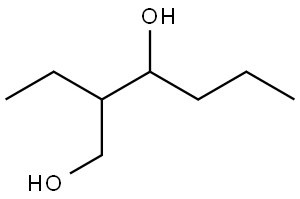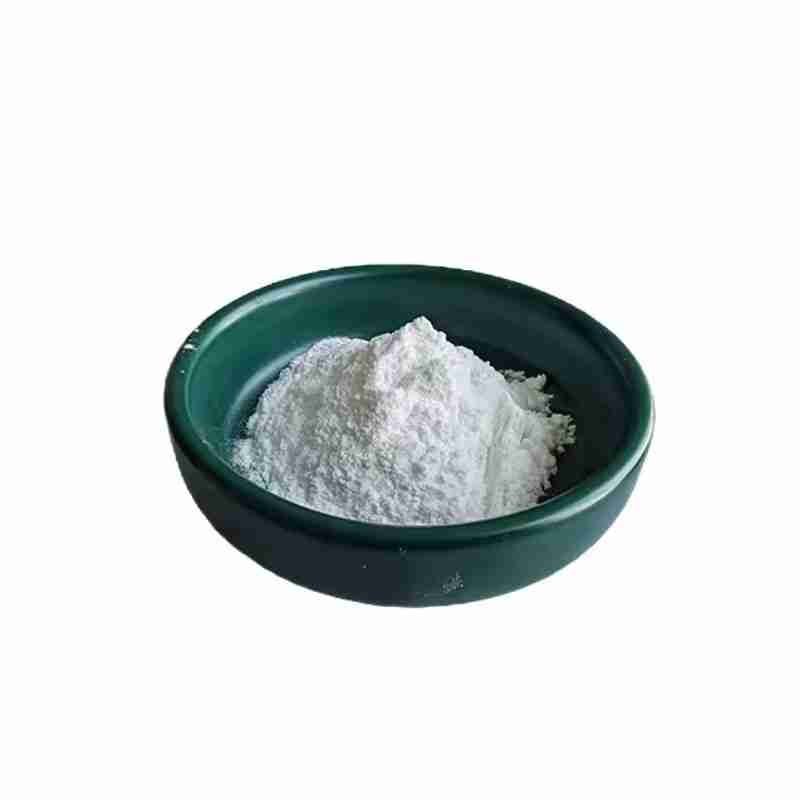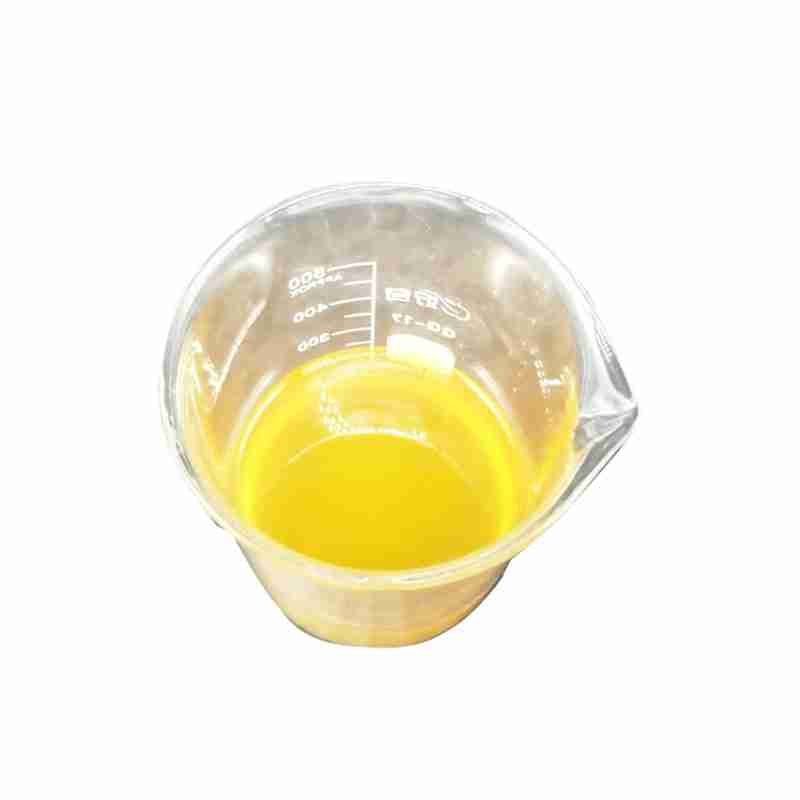2-Ethyl-1,3-hexanediol CAS #94-96-2
2-Ethyl-1,3-hexanediol is a colorless viscous liquid used as a plasticizer in the plastics and resin industry. It is also used in ink formulation to increase the permeability of ink on paper.
First, butyraldehyde is synthesized from propylene. Under the catalysis of alkali or acid, butyraldehyde self-condenses to generate 2-ethyl-3-hydroxyhexanal. This compound is very unstable and can be obtained by hydrogenation to obtain 2-ethyl-1,3-hexanediol.
发送询盘
2-Ethyl-1,3-hexanediol CAS #94-96-2
| 2-Ethyl-1,3-hexanediol Basic information |
| Product Name: | 2-Ethyl-1,3-hexanediol |
| Synonyms: | OCTYLENE GLYCOL(R);RUTGERS 612(R);2-ethyl-1,3-hexyleneglycol;2-Ethyl-2-propyl-1,3-propanediol;ETHOHEXADIOL(R);ETHOHEXADIOL(TM);2-Ethyl
hexanediol;2-ethyl-1,3-hexanediol,mixtureofisomers |
| CAS: | 94-96-2 |
| MF: | C8H18O2 |
| MW: | 146.23 |
| EINECS: | 202-377-9 |
| Product Categories: | Building Blocks;Chemical Synthesis;Organic Building Blocks;Oxygen Compounds;Polyols |
| Mol File: | 94-96-2.mol |
 |
|
| 2-Ethyl-1,3-hexanediol Chemical Properties |
| Melting point | -40 ??C (lit.) |
| Boiling point | 241-249 ??C (lit.) |
| density | 0.933 g/mL at 25 ??C (lit.) |
| vapor density | 5 (vs air) |
| vapor pressure | <0.01 hPa (20 ??C) |
| refractive index | n20/D?1.451(lit.) |
| Fp | 265???F |
| storage temp. | Store below +30??C. |
| solubility | 42g/l |
| form | Liquid |
| pka | 14.85??0.10(Predicted) |
| color | Clear |
| Odor | at 100.00?%. odorless |
| Water Solubility | 42 g/L (20 oC) |
| Sensitive | Hygroscopic |
| Merck | 14,3744 |
| BRN | 1735324 |
| Dielectric constant | 15.24 |
| LogP | 3.63 at 20?? |
| CAS DataBase Reference | 94-96-2(CAS DataBase Reference) |
| NIST Chemistry Reference | 1,3-Hexanediol, 2-ethyl-(94-96-2) |
| EPA Substance Registry System | 2-Ethyl-1,3-hexanediol (94-96-2) |
| Safety Information |
| Hazard Codes | Xi |
| Risk Statements | 41 |
| Safety Statements | 25-26-39-46 |
| WGK Germany | 1 |
| RTECS | MO2625000 |
| Autoignition Temperature | 340 ??C DIN 51794 |
| TSCA | Yes |
| HS Code | 29053980 |
| Hazardous Substances Data | 94-96-2(Hazardous Substances Data) |
| Toxicity | LD50 in male, female rats (ml/kg): 9.85, 4.92 orally (Ballantyne) |
- 2
- 2-diallylpent-4-en-1-amine
- 4
- 95-16-9
- Ammonium sulfamate
- Benzothiazole
- cas:67889-00-3ح2
- cas:83524-75-8 | pigment black 32
- cas:928836-00-4 | 2
- cas:932745-70-5 | 4
- Chemical Minerals
- Coconut diethanolamide
- Daily Chemicals
- discount
- for sale
- General pvc resin
- hexyl D-glucoside
- in stock
- Lauramidopropyl betaine
- LAURIC ACID MONOETHANOLAMIDE
- Petroleum Additives
- Plasticiser
- Ploymers
- price
- PVC
- quotation
- Raw Materal
- Remove term: Petroleum Additives Petroleum Additive
- SODIUM ETHYL 2-SULFOLAURATE
Related Products
Polyhexamethylene guanidine hydrochloride, often abbreviated as PHMG-HCl, is a high molecular weight polymeric biguanide compound known for its potent antimicrobial properties. With a chemical structure that features a long chain of methylene groups bridged by guanidine units, PHMG-HCl is effective against a broad spectrum of microorganisms, including bacteria, viruses, and fungi.
This hydrochloride salt form of PHMG is highly soluble in water and is commonly used in various applications due to its non-irritant and non-toxic nature to human skin and mucous membranes. It is widely recognized for its ability to form a colorless and odorless solution, making it an ideal choice for use in personal care products, medical disinfectants, and water treatment processes.
The versatility of PHMG-HCl lies in its cationic nature, which allows it to bind to negatively charged microbial cell walls, disrupting their integrity and leading to cell death. This mechanism of action contributes to its effectiveness as a preservative and disinfectant. Moreover, its substantivity, or the ability to adhere to surfaces, enhances its long-lasting antimicrobial activity.
In summary, Polyhexamethylene guanidine hydrochloride is a reliable and efficient antimicrobial agent, pivotal in industries where hygiene and cleanliness are paramount, offering a safe and sustainable solution for microbial control.
Terpene resin is a type of natural resin derived from terpenes, which are organic compounds found in various plants. It is known for its aromatic properties and is commonly used in the production of fragrances, flavorings, and as a component in adhesives and coatings within the chemical industry. Terpene resin offers a range of benefits, including enhancing the solubility of essential oils and providing a stable base for various applications. Its natural origin makes it a preferred choice for eco-friendly products.
Octyl 4-methoxycinnamate, scientifically known as 2-Ethylhexyl 4-Methoxycinnamate, is a highly effective organic UV filter commonly used in the formulation of sunscreens and cosmetic products. This compound is renowned for its ability to absorb ultraviolet B (UVB) radiation, providing a reliable defense against the sun’s harmful effects on the skin.
Characterized by its chemical formula C19H28O3, Octyl 4-methoxycinnamate is a liquid ester that is readily soluble in organic solvents. It is valued for its photostability, which means it maintains its protective properties even after prolonged exposure to sunlight. This feature makes it an ideal ingredient for products designed to offer long-lasting sun protection.
In addition to its UVB absorption capabilities, Octyl 4-methoxycinnamate is also appreciated for its compatibility with other UV filters, allowing for the creation of broad-spectrum sunscreens. It contributes to the development of formulations that are non-greasy and cosmetically elegant, suitable for a variety of skin types.
As a key component in sun care products, Octyl 4-methoxycinnamate supports the skin’s health by preventing sunburn, reducing the risk of skin cancer, and delaying the signs of photoaging. Its safety profile and efficacy make it a preferred choice in the personal care and dermatological industries for sun protection solutions.
Chemical Name: Choline salicylate
CAS No.: 2016-36-6
Molecular Formula: C12H19NO4
Molecular Weight: 241.28
Appearance: Red-Brown Crystal
3,4-Ethylenedioxythiophene is a synthetic organic compound characterized by its unique structure that includes a thiophene ring with ethylenedioxy substituents at the 3 and 4 positions. This compound is known for its potential applications in the synthesis of various organic materials, including pharmaceuticals and organic electronic devices such as sensors and solar cells. Its stability and reactivity make it a versatile intermediate in the chemical industry.
Tetraacetylethylenediamine is a fully acetylated derivative of ethylenediamine, offering a high reactivity as an intermediate in organic synthesis. Its unique structure makes it a critical component in the production of specialty chemicals and pharmaceuticals, ensuring a wide range of applications in the chemical industry.
Chemical Name: Quercetin-3-O-sophoroside
CAS No.: 18609-17-1
Molecular Formula: C27H30O17
Molecular Weight: 626.52
Chemical Name: Potassium Castorate
CAS No.: 8013-05-6
Molecular Formula: C57H107K3O12
Molecular Weight: 1101.74718
Appearance: Yellow Liquid
Chemical Name: Zinc citrate
Synonyms: Zinc citrate trihydrate
CAS No.: 546-46-3
Molecular Formula: C6H8O7Zn
Molecular Weight: 257.5
Appearance: White powder
Chemical Name: Arabic gum
CAS No.: 9000-01-5
Appearance: powder
Chemical Name: Ammonium Iron(II) Sulfate
Synonyms: Diammonium iron bis(sulphate); iron (ii) ammonium sulfate
CAS No.: 10045-89-3
Molecular Formula: FeH5NO4S
Molecular Weight: 170.95
Succinimide is a heterocyclic organic compound and an important industrial chemical. It serves as a key intermediate in the synthesis of various pharmaceuticals, agrochemicals, and other specialty chemicals. Known for its reactivity and versatility, succinimide is widely used in the production of succinic anhydride, a precursor to many polymers and plasticizers, highlighting its significance in the chemical industry.


















